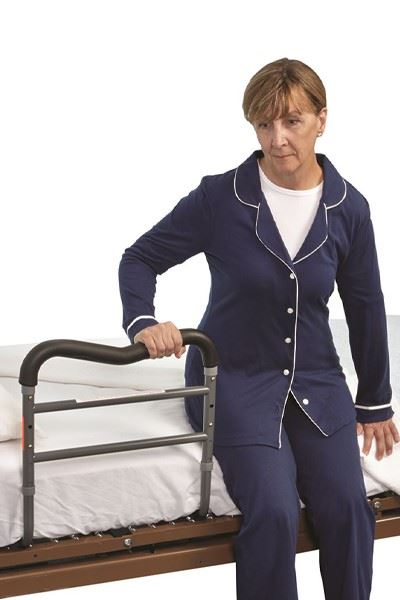-
Home
-
Bed Safety Rails: Helping Prevent Patient Falls
Bed Safety Rails: Helping Prevent Patient Falls
November 30, 2023
 For long-term care facilities, patient falls are a major concern, as they can be both dangerous for the patient and costly for the facility. To mitigate the risk of patient falls, several types of safety devices can be used.
For long-term care facilities, patient falls are a major concern, as they can be both dangerous for the patient and costly for the facility. To mitigate the risk of patient falls, several types of safety devices can be used.
Bed safety rails are safety devices that are used to prevent patients from falling out of their beds. These devices are essential in reducing the risk of injury and promoting safety for patients, especially those who are elderly or have mobility issues.
Key Benefits
One of the primary benefits of bed safety rails is that they help prevent patients from falling out of their beds. According to statistics from the Centers for Disease Control and Prevention (CDC), falls are a leading cause of injury among older adults. Bed rails can help reduce the risk of falls by preventing patients from rolling off the edge of the bed.
Another benefit of bed safety rails is that they can provide support and stability for patients who need assistance in getting in and out of bed. This is especially beneficial for patients who have limited mobility, are recovering from surgery, or experience chronic pain. Bed safety rails can provide an extra level of support and make these activities easier and safer for patients.
Finally, bed safety rails can help reduce the risk of pressure ulcers by providing a barrier between the patient and the edge of the bed. When moving around in bed, patients may accidentally scoot too close to the edge, which can put them at risk for pressure ulcers. Bed safety rails keep the patient properly positioned within the bounds of the bed, which can help prevent these injuries.
Potential Risks and Concerns
While bed safety rails can provide many benefits, there are also some potential risks and concerns associated with their use. One of the most serious risks associated with bed safety rails is that patients can become trapped or entangled in them. This can be especially dangerous if the patient is unable to free themselves, as it can cause suffocation or other serious injuries.
Another concern with bed safety rails is that they can restrict patient mobility. Patients who are able to move around in bed may feel confined or restricted by the rails, which can cause anxiety or frustration. In some cases, patients may even try to climb over the rails to escape, which can be dangerous.
Finally, bed safety rails can cause skin irritation or injury if they are not properly placed or adjusted. Patients who are prone to skin irritation or who have open wounds may be particularly susceptible to these injuries.
Best Practices for Using Bed Safety Rails
To reduce the risk of potential risks and concerns associated with bed safety rails, it is essential to follow some best practices for their use. Firstly, healthcare providers should conduct a risk assessment for each patient to determine whether bed safety rails are necessary. This assessment should consider the patient's mobility, cognitive function, and other factors that may impact their safety and well-being.
Secondly, healthcare providers should ensure that bed safety rails are properly installed, adjusted, and maintained. Rails should be securely attached to the bed frame and should be adjusted to a safe height to prevent patients from becoming trapped or entangled in them. Healthcare providers should also regularly check the rails for wear and tear or other defects and replace them as needed.
Bed safety rails are essential tools to enhance the safety of individuals who have mobility challenges or are at a higher risk of falling while in bed. If correctly installed and properly used, these rails provide additional support, promote independence, and mitigate the risk of falls and injuries, making them a valuable asset for caregivers and healthcare providers.